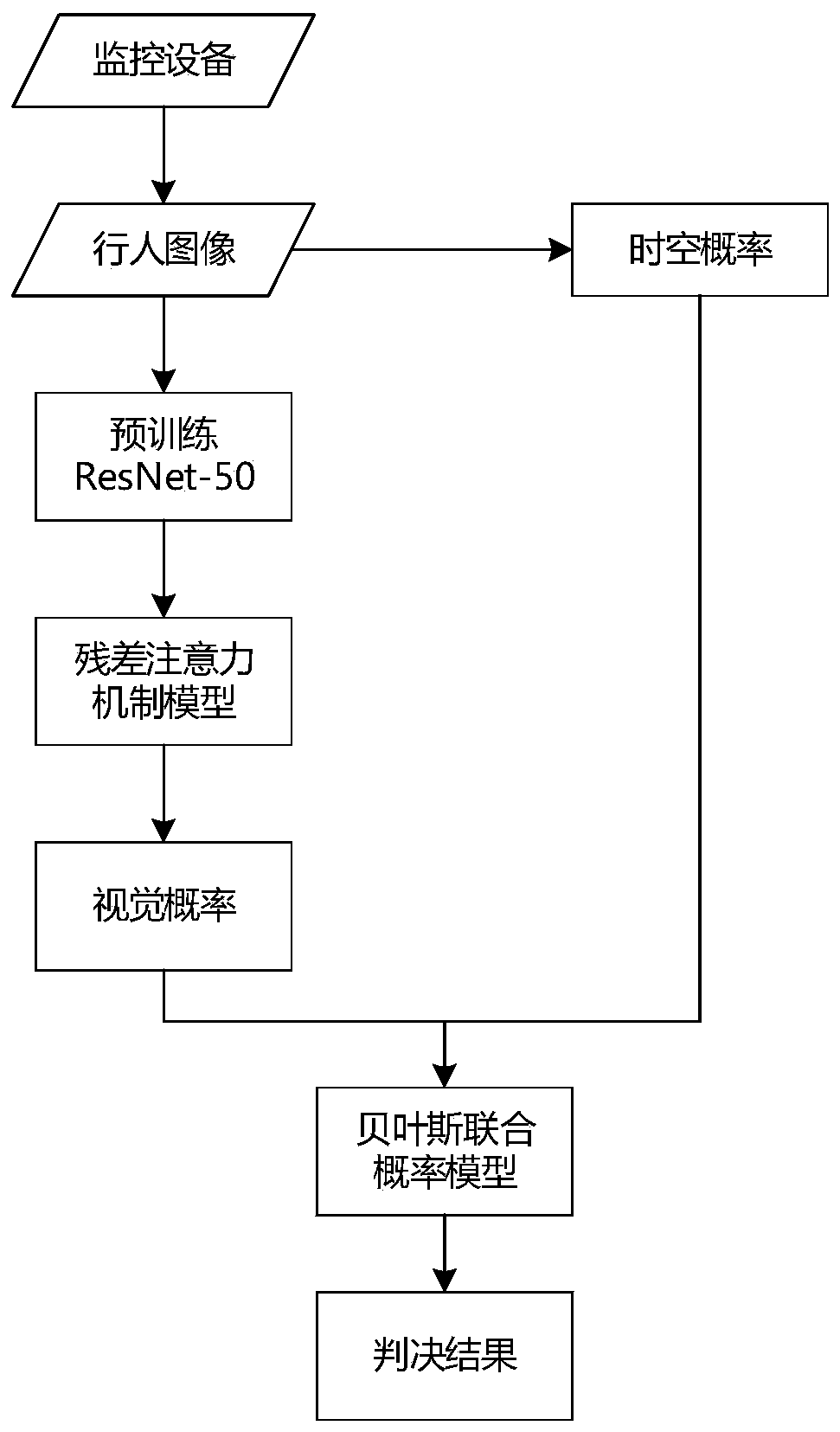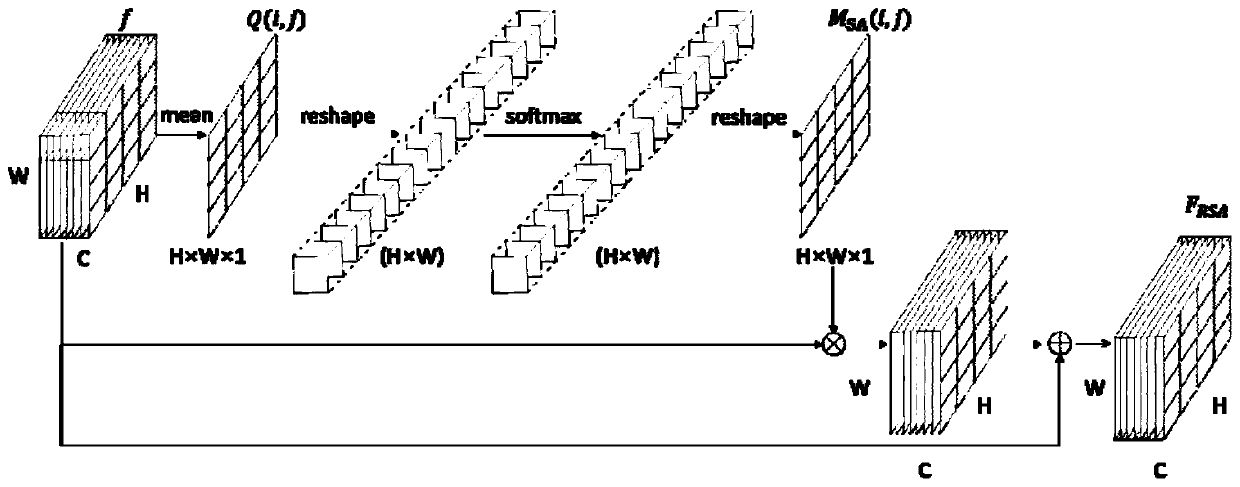Pedestrian re-identification method and device based on residual attention mechanism space-time joint model
A technology of pedestrian re-identification and attention mechanism, which is applied in the field of pedestrian re-identification based on the spatio-temporal joint model of residual attention mechanism, can solve the problem of ignoring the temporal and spatial information of image time series, and achieve the effect of accelerated convergence and high precision
- Summary
- Abstract
- Description
- Claims
- Application Information
AI Technical Summary
Problems solved by technology
Method used
Image
Examples
Embodiment Construction
[0052] The technical solutions of the present invention will be further described below in conjunction with the accompanying drawings and embodiments.
[0053] The embodiment of the present invention provides a pedestrian re-identification method based on the spatiotemporal joint model of the residual attention mechanism. The environment is PyTorch 1.1.0, Python 3.5, CUDA9.0 and CUDNN7.1. During specific implementation, a corresponding environment may be set as required.
[0054] Embodiments of the present invention provide a pedestrian re-identification method based on the residual attention mechanism spatio-temporal joint model, see figure 1 , the implementation process includes the following specific steps:
[0055] In step a, feature extraction is performed on the input pedestrian x through the ResNet-50 model pre-trained by the ImageNet dataset, and the feature matrix is denoted as f.
[0056] Wherein, the ImageNet data set is a public data set, and the ResNet-50 mod...
PUM
 Login to View More
Login to View More Abstract
Description
Claims
Application Information
 Login to View More
Login to View More - R&D
- Intellectual Property
- Life Sciences
- Materials
- Tech Scout
- Unparalleled Data Quality
- Higher Quality Content
- 60% Fewer Hallucinations
Browse by: Latest US Patents, China's latest patents, Technical Efficacy Thesaurus, Application Domain, Technology Topic, Popular Technical Reports.
© 2025 PatSnap. All rights reserved.Legal|Privacy policy|Modern Slavery Act Transparency Statement|Sitemap|About US| Contact US: help@patsnap.com



